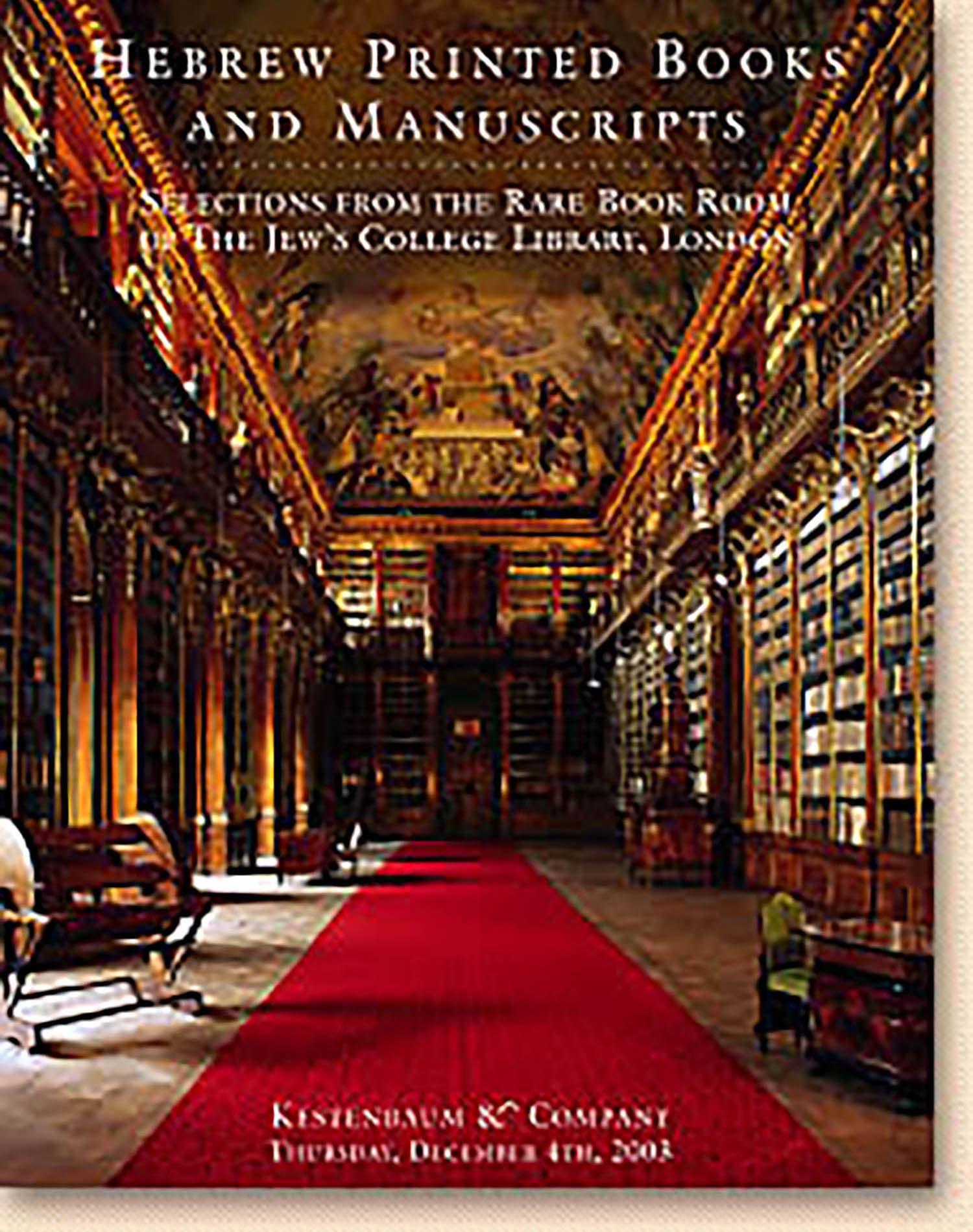Halichoth Sheva [Grammatical Laws of Punctuation]

AUCTION 21 |
Thursday, December 04th,
2003 at 1:00
Kestenbaum & Company Holds Inaugural Auction of Hebrew Printed Books & Manuscripts at Their New Galleries
Lot 10
Almoli, Solomon ben Jacob
Halichoth Sheva [Grammatical Laws of Punctuation]
Constantinople: n.p. (1520)
Est: $10,000 - $12,000
PRICE REALIZED $2,500
- DK CALL AS RE THE (NON)MISSING LEAF F.8.
Halichoth Sheva focuses on the application of the Hebrew vowel “sheva” (e).
It was intended as a prolegomenon to an exhaustive work on Hebrew grammar, however, as in the case of the Author’s other projected encyclopedic works, this too never reached completion. A critical edition of Halikhoth Sheva was published by H. Yallon.
The Author of this short treatise, Solomon Almoli (before 1485 - after 1542), was of Spanish origin. He sojourned for a short while in Salonika, where his first work, a digest of dreams: Pithron Chalomoth was published (c.1515). Eventually, he permanently relocated to Constantinople where earned his livelihood as a physician.
This digest of dream interpretation was consulted by both Freud and Jung, and has recently been partially translated into English by Prof. Yaakov Elman. One can only speculate what psychological thread connects the oneirologist to the grammarian.
EXTREMELY RARE. Our copy differs from the two copies in JNUL (one a photocopy) and the single copy of JTSA. The differences were described by Chanoch Yallon in his critical edition (Jerusalem, 1945), pp. 86-87. Our copy is missing f. 8. At the end of f. 7 the text promises Introduction III and IV at the conclusion of the book, but they were never forthcoming. F. 9 jumps to Introduction V of the other versions (though it is called “Introduction IV”). This makes our copy UNIQUE.
See EJ, Vol. II, cols. 663-664.
--(with the exception of the dream digest)
